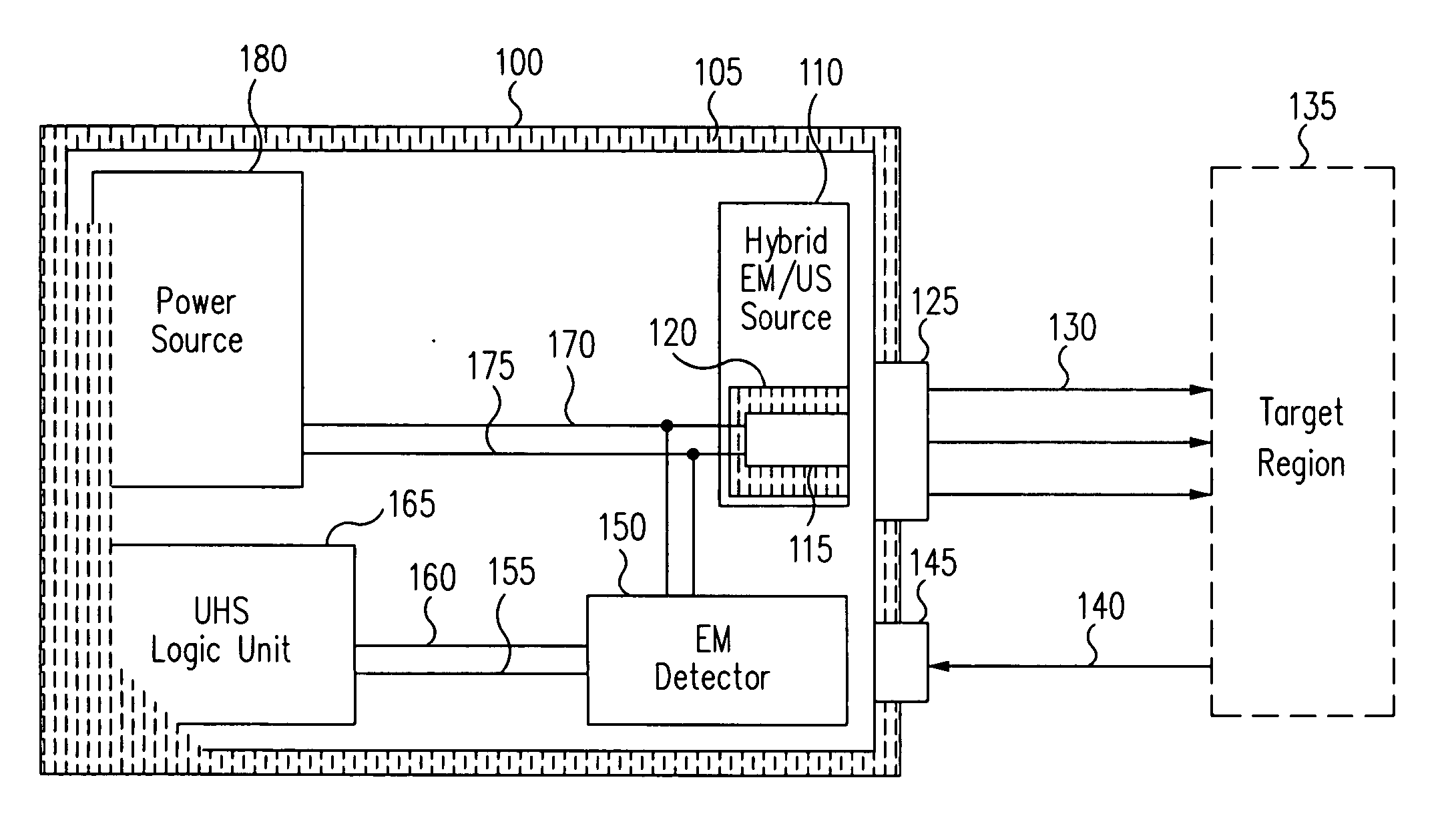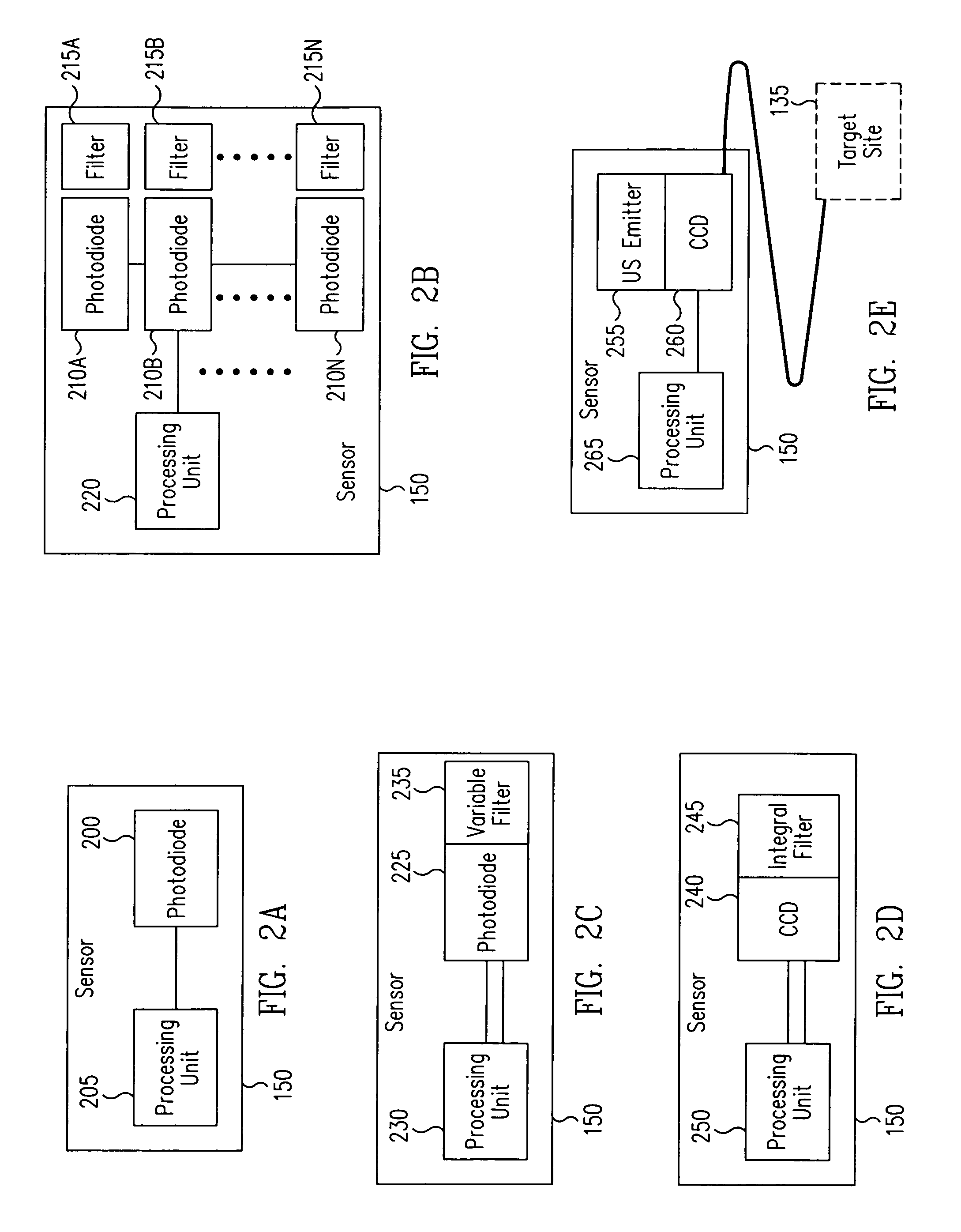Ultra-high-specificity device and methods for the screening of in-vivo tumors
a high-specificity, tumor-based technology, applied in the field of ultra-high-specificity in-vivo tumor screening, can solve the problems of false-positive tests having significant negative consequences, poor specificity, and inability to be used as widely as desired, and achieve non-electrical transmission of measuring photons, safe deployment, and simple
- Summary
- Abstract
- Description
- Claims
- Application Information
AI Technical Summary
Benefits of technology
Problems solved by technology
Method used
Image
Examples
Embodiment Construction
[0030] Generally, in accordance with exemplary embodiments of the present invention, a device and methods for the ultra-high-specificity (“UHS”) screening of in-vivo tumors in a target tissue site are provided. Tumors, as used herein, generally refer to a malignant tissue, or other type of cancer, to be diagnosed in a tissue, which may be any material from a living animal, plant, viral, or bacterial subject, with an emphasis on mammals, especially humans. A target tissue may be a tissue material to be detected, imaged, or studied. In the accompanying examples described herein below, one target tissue may be the breast.
[0031] In accordance with the present invention, the screening of in-vivo tumors can be applied in a large population. The device of the present invention can be used as an adjunct screening tool that is used in addition to other standard screening tools already in use. An adjunct screening tool has the disadvantage that it adds to the number of tests performed, but i...
PUM
 Login to View More
Login to View More Abstract
Description
Claims
Application Information
 Login to View More
Login to View More - R&D
- Intellectual Property
- Life Sciences
- Materials
- Tech Scout
- Unparalleled Data Quality
- Higher Quality Content
- 60% Fewer Hallucinations
Browse by: Latest US Patents, China's latest patents, Technical Efficacy Thesaurus, Application Domain, Technology Topic, Popular Technical Reports.
© 2025 PatSnap. All rights reserved.Legal|Privacy policy|Modern Slavery Act Transparency Statement|Sitemap|About US| Contact US: help@patsnap.com



